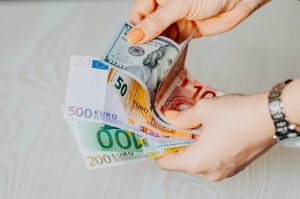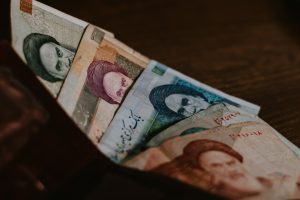Forex trading is a popular method of investment that involves buying, selling, and exchanging currencies with the aim of making a profit. The forex market is the largest and most liquid financial market in the world, with an estimated daily turnover of over $5 trillion. The high liquidity and volatility of the forex market make it an attractive investment option for traders looking to make quick profits. In this article, we will discuss how to buy, sell, and profit from forex trading.
Step 1: Understanding Forex Trading
Before you start trading forex, it is essential to have a clear understanding of what forex trading is all about. Forex trading involves buying and selling currencies in pairs. The value of each currency in the pair is expressed in terms of the other currency. For example, if you want to buy the EUR/USD pair, you are buying the euro and selling the US dollar. The aim is to buy a currency at a lower price and sell it at a higher price to make a profit.
Step 2: Choose a Reliable Forex Broker
A forex broker is an intermediary between you and the forex market. The broker provides you with a trading platform, access to the market, and other trading tools. Therefore, it is crucial to choose a reliable and trustworthy forex broker to ensure the safety of your funds and trades. A good forex broker should be regulated by a reputable regulatory body, have a good reputation, and provide excellent customer support.
Step 3: Open a Trading Account
Once you have chosen a forex broker, the next step is to open a trading account. The account opening process is usually straightforward and involves providing personal details, contact information, and proof of identity. Most brokers offer different account types, with varying minimum deposit requirements and trading conditions. Choose an account type that suits your trading needs and budget.
Step 4: Fund your Trading Account
To start trading forex, you need to fund your trading account. Most brokers offer different payment methods, including bank transfers, credit/debit cards, and e-wallets. Choose a payment method that is convenient and easy for you. It is advisable to start with a small amount and gradually increase your trading capital as you gain experience and confidence in your trading strategy.
Step 5: Choose a Trading Strategy
To make consistent profits in forex trading, you need to have a well-defined trading strategy. A trading strategy is a set of rules and guidelines that you follow when trading forex. It includes entry and exit points, risk management rules, and money management principles. There are various trading strategies in forex trading, including technical analysis, fundamental analysis, and price action trading.
Step 6: Start Trading
Once you have funded your trading account and developed a trading strategy, you can start trading forex. The forex market is open 24 hours a day, five days a week, allowing you to trade at any time of the day or night. Most brokers offer a range of trading instruments, including major and minor currency pairs, exotic currency pairs, commodities, and indices. Choose the trading instrument that you are most comfortable with and start trading.
Step 7: Monitor Your Trades
As you start trading forex, it is essential to monitor your trades regularly. Keep track of your open positions, profits, and losses. Use stop-loss orders to minimize your losses and take-profit orders to lock in your profits. Regularly review your trading strategy and make adjustments where necessary.
Conclusion
Forex trading can be a profitable investment option if done correctly. To buy, sell, and profit from forex trading, you need to have a good understanding of the market, choose a reliable forex broker, open a trading account, fund your account, develop a trading strategy, start trading, and monitor your trades. Remember to be patient, disciplined, and consistent in your trading approach.






